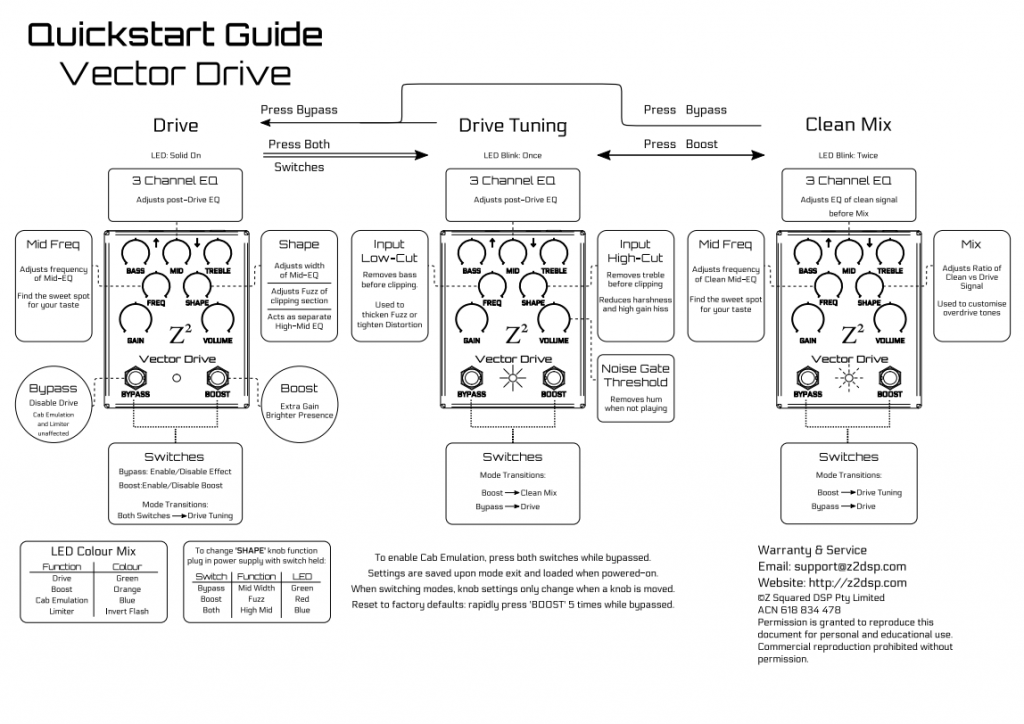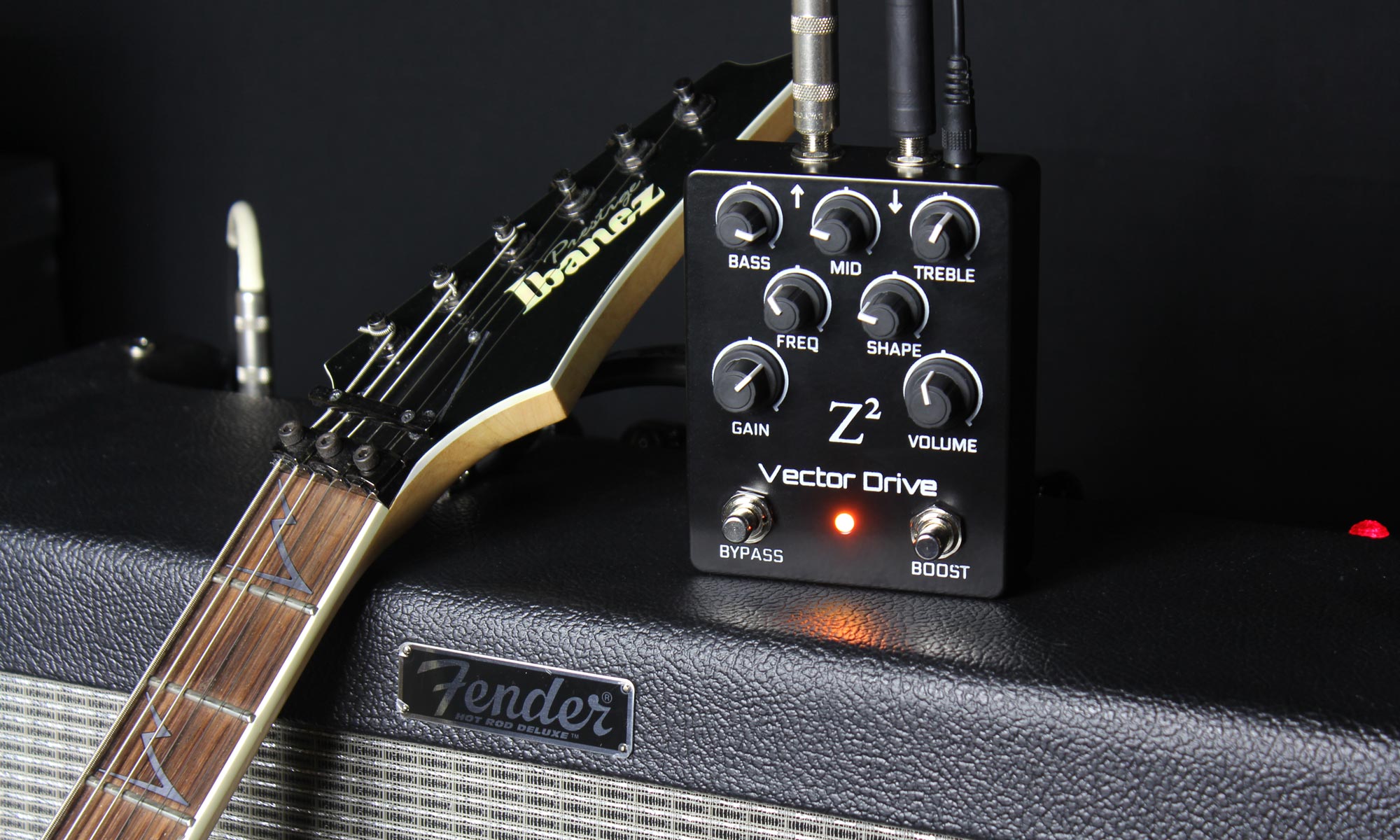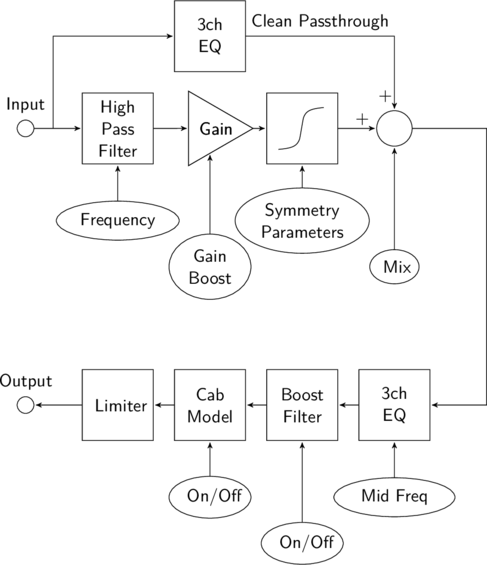The Vector Drive is host to a digital playground that gives you the ability to craft a diverse range of unique tones; anything from crushing distortion to sweet attack-sensitive overdrive, and fuzz which tears at the seams.

Drive Mode
The Vector Drive’s main mode of operation gives you access to everything you could expect from a drive pedal: gain, volume and a three band EQ. On top of this is there is a mid EQ frequency knob, the Shape knob, which can be programmed as a mid EQ width adjustment, an extra “high mids” EQ channel, or a fuzz shape adjustment, and the Boost switch which provides extra gain and presence to give any passage that extra oomph.
Advanced Tuning
The Vector Drive also allows you to get under the hood and modify a series of advanced tuning adjustments not normally found in drive pedals.
These features are accessible through two advanced tuning modes which temporarily change the function of the front panel controls.
Drive Tuning
Drive Tuning mode allows you to adjust the overall flavour of the drive tone. This is achieved by filtering the guitar signal prior to clipping.
‘Input High Pass Filter’
This filter adjusts how much bass to remove before the clipping stage, allowing you to either tighten up the low end of the distortion by removing more bass, or get more crackle from your fuzz tones by allowing the bass frequencies to thicken your drive tone.
‘Input Low Pass Filter’
Conversely, the low pass filter allows removal of excessive treble prior to clipping. This lets you retain tonal brightness or tame harsh high frequencies and hiss from ultra high-gain distortion.
Drive Tuning is accessed by pressing both of the footswitches simultaneously while the effect is enabled. While in Drive Tuning mode, the LED will periodically emit a single flash.
Clean Mix
A whole new library of tones are available using the Vector Drive by utilising the Clean Mix mode to create a custom blend of the driven and clean signal.
Mix
This control adjusts the ratio of clean signal to drive signal at the output of the pedal. This can be used to dial in subtle cleans alongside your drive or create unique blends of
Clean EQ
In Clean Mix mode, the three band EQ, with parametric mid, is applied to the clean signal prior to mixing. This allows you to make adjustments to the tone of the clean signal without affecting the drive tone. With this feature, completely unique sounds can be invented with combinations such as distorted bass frequencies with clean treble, or mixing clean bass into a treble boosted distortion.
Clean Mix is accessed by pressing both of the footswitches simultaneously while in Drive Tuning mode. While in Clean Mix mode, the LED will periodically emit a double flash. Pressing both, or either, of the footswitches will return to the main drive mode.
Internal Memory
The Vector Drive will retain the Drive Tuning and Clean Mix settings when it is switched off. They are written to memory when you return to main drive mode. When the Shape knob is moved its setting is also written to internal memory allowing you to keep any adjustments made after switching its function.

